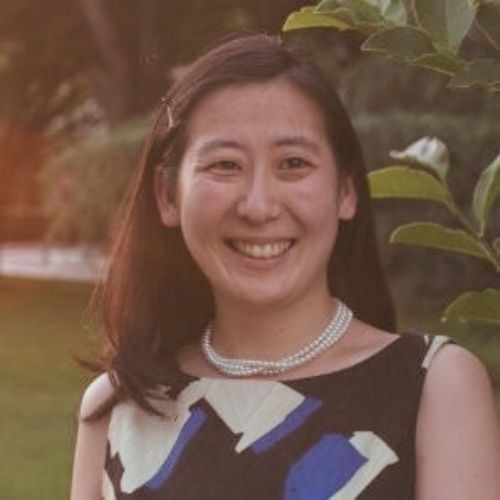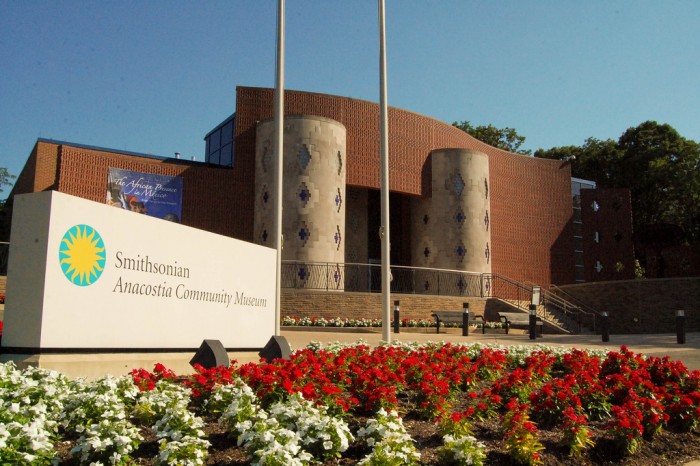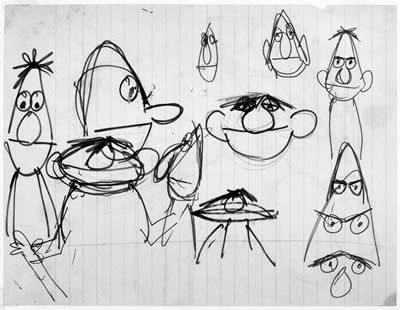A few of my favorite things: Angela Han
Smithsonian staff and volunteers work countless hours in the halls of our museums and research centers, in the field, at the Zoo, in our gardens and facilities. We are privileged to spend time with some of the nation’s most cherished treasures as we go about our duties. Sometimes, these unique experiences find a special place in our own personal stories. Amy Kehs introduces Angela Han and a few of her favorite Smithsonian things.
Angela Han first fell in love with science at her hometown’s Detroit Science Center — now the Michigan Science Center, a Smithsonian affiliate. She vividly remembers riding its rainbow escalator, leading her into the place that fueled her curiosity and set the stage for her future career.
She left Detroit for Caltech in Pasadena, California, where she studied both physics and classical music. Though passionate about both fields, she wasn’t aiming for a full-time career as either a flutist or a scientist. After college, her path actually led home to Michigan, where she began working as a part-time educator at the Detroit Science Center.

Angela Han
For years, her career played two melodies. She worked part-time at multiple museums before stepping into her first full-time role as the executive director of an orchestra. From writing grants to stocking the bathrooms, she kept the boat afloat (or, in this case, the note afloat). (*Ed. note: It is with great professional envy that we note this truly appalling pun. Well done, Amy.) The smallest details, she learned, can have a huge effect on the success of an organization. It’s a lesson she carries with her to this day — and one she brings to the Smithsonian.
Angela’s connection to the Smithsonian began in 2014 when she joined the National Museum of Natural History as a contractor, helping engage young audiences with science. After a few years away, she returned to the Smithsonian in 2019 as a senior advancement officer in the Office of Advancement, where her history of doing-it-all has served her well. She’s become known for her versatility, stepping in to help with staffing transitions across Smithsonian units. Over the past five years, she’s worked with 11 different Smithsonian units, including her current work at the Smithsonian Astrophysical Observatory. Every day, she solves problems by mixing the hands-on elements she loves about science with the detail-oriented elements she loves about music. It’s the perfect harmony.
Angela’s years and range of experience has not only led to her strong connection with the Institution; it’s also made choosing her favorite things quite difficult. But here are three — some big, some small, but all important.
Anacostia Community Museum

The Smithsonian Anacostia Community Museum, July 4, 2010 (Photo © BAR Photography)
Angela’s first favorite thing is the Smithsonian’s Anacostia Community Museum (ACM), which tells the stories of the residents who have shaped the Greater Washington D.C. region. When she came back to the Smithsonian in 2019, helping at ACM was her first assignment. It was also her first time visiting it, and she loved that a museum with such a local focus had a place at the Institution. She’s not the only one who’s impressed. ACM’s success has served as a model for Community museums across the country — places that not only research and educate but also inspire visitors to capture and support the stories of their surroundings.
Musical Serendipity

American bluegrass banjo player Abigail Washburn and Wu Zhangshi, a musician from the Dong people of China. (Photo by Jing Li, couytesy Smithsonian Folklife Festival)
Angela’s second favorite thing is a musical performance that she saw at the 2014 Smithsonian Folklife Festival. Festival participants from different programs often make new friends and collaborate organically during their time at the Festival. Angela’s favorite thing is one of these moments. In the textile tent that summer, American bluegrass banjo player Abigail Washburn and Wu Zhangshi, a musician from the Dong people of China, began making music together — Abby with her banjo and Wu with his (a kind of Chinese lute). They discovered that both cultures shared songs about the cuckoo bird and seamlessly blended a Dong melody with an Appalachian folk tune. When they sang “cuckoo” in unison, it felt like a bridge between two distant lands. The collaboration culminated in a performance during the Rinzler Memorial Concert, where Abby invited the group on stage to reprise the song. The result was breathtaking, earning a standing ovation from the audience.
“Jim Henson’s Fantastic World”

Sketch from the Jim Henson’s Fantastic World exhibition
Images © The Jim Henson Company. Jim Henson’s mark and logo are trademarks of the Jim Henson Company. All rights reserved. MUPPET, MUPPETS, and the Muppet characters are registered trademarks of Muppets Holding Company, LLC. All rights reserved. © 2006 Muppets Holding Company, LLC. Sesame Street ® and associated characters, trademarks, and design elements are owned and licensed by Sesame Workshop. © Sesame Workshop. All rights reserved.
Angela’s third favorite thing is the SITES exhibition, “Jim Henson’s Fantastic World.” The exhibition toured from 2007-2012 and featured artwork by Henson. One of its stops was the International Gallery in the Smithsonian’s underground museum, research, and education complex, the Quad. When Angela had just moved to Washington, D.C., her mom came to visit from Michigan, and they went to the Smithsonian’s National Museum of Asian Art. Angela was not working at the Smithsonian yet, and they thought they were lost in what seemed to be the basement. It was there that they happened upon this exhibit, and it struck Angela how amazing the Smithsonian is — that you could be looking for a map and come across an exhibition that changes the course of your day. Or, in Angela’s case, the course of your career.
Posted: 21 July 2025
- Categories:



